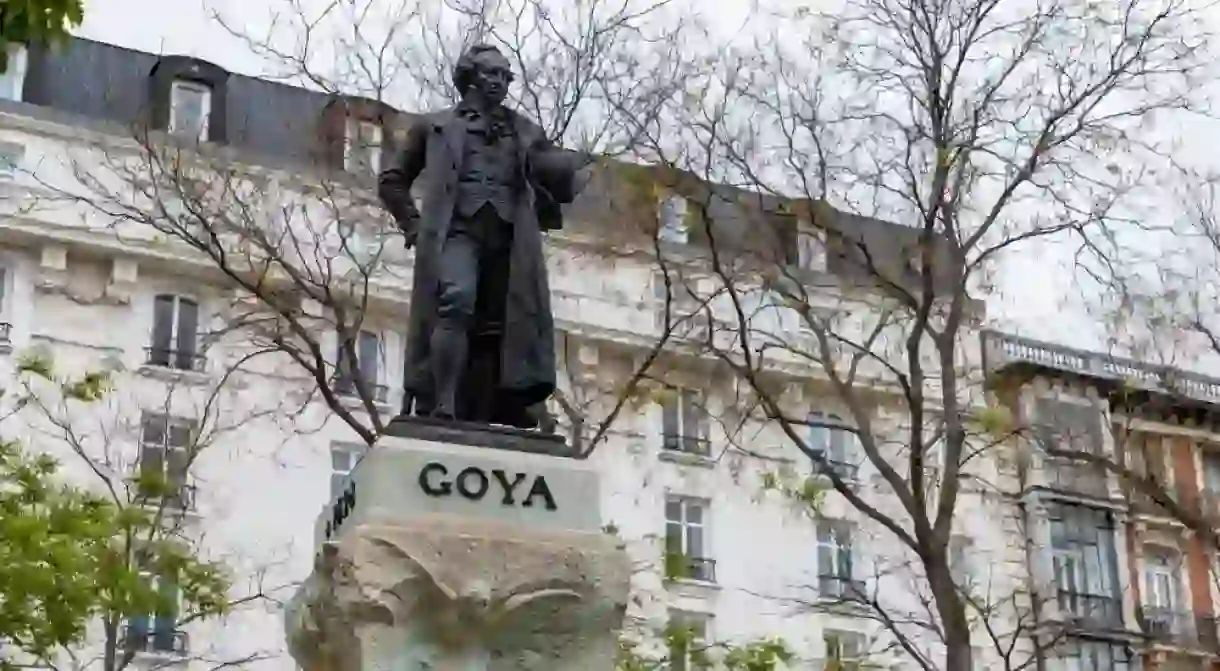Goya in Madrid: Where to See His Masterpieces

Francisco de Goya is one of the most renowned of Spain’s master painters. Although Goya wasn’t born in Madrid, he came to live and work there at the Royal Tapestry workshop in 1775 and later became a court painter for King Carlos III. Here’s a guide to finding some of Goya’s greatest masterpieces in Madrid.
Museo Del Prado
Art Gallery, Museum

Madrid’s most famous art museum, the Prado, is home to what may be the most extensive collection of Goya’s masterpieces in the world. Visitors can view 152 Goya paintings, over 620 drawings, 123 handwritten documents/letters and a selection of prints. Make sure to catch the famous Second of May and Third of May paintings, depicting the horrors of war; his delightful renditions of Madrileños frolicking around the Manazanares River (featured in the above photo) and of course, the famous Maja paintings, which are two versions of the same woman, clothed and naked.
Museo Thyssen-Bornemisza
Museum

The Thyssen museum features an eclectic private collection of art from the Baroness Thyssen. You can currently find four of Goya’s paintings there: Portrait of Asensio Julià, Portrait of Ferdinand VII and El tío Paquete. There was a fourth Goya painting at the museum until Una mujer y dos ninos junto a una fuente was put up for auction by the Thyssen family. The painting was estimated to have sold for about seven million euros.
Real Parroquia de San Antonio de la Florida
Church

This very special neoclassical chapel is famous because it’s home to Francisco Goya’s remains, not to mention the ceiling and dome are covered with breathtaking frescoes of Saint Antonio and his miracles painted by Goya in 1798. If you visit before April 2, 2017, you can also check out a special exhibit taking place at the church, a homage to Goya by Mexican artist and photographer Denise de la Rue. The exhibit ‘Angelas’ will showcase photographs iconic Spanish actresses posing among the angel paintings.
Palacio Real
Building, Historical Landmark

Madrid’s Royal Palace is home to four of Goya’s famous masterpieces, as well as paintings and frescoes by Caravaggio, Velázquez, Corrado Giaquinto, Tiepolo and Mengs. You can even see a Stradivarius violin among the magnificent instrument collection. But back to Goya. His four paintings are mainly of the Royal Family – King Charles IV and his wife María Luisa de Parma dressed in royal court attire or King Charles IV in his hunting outfit.
Real Fábrica de Tapices
Library, Museum
Goya started working at this factory, which is still in use today in 1775. Whereas many of the tapestries he created are in the Museo del Prado, there are a couple of his paintings you can check out here, as well as some of his prints in the library. Free guided tours of the museum are available daily once you pay the admission fee.
Real Academia de Bellas Artes de San Fernando
Art Gallery, Museum
This museum and academy (of which Goya was once a director) features 13 paintings by the artist, including two self portraits. The self portraits are among the most famous in the collection. Entrance fees are €10 (£8) per person, but make sure to check if you meet any of the requirements for reduced or free admission.
Real Basílica de San Francisco el Grande
Church

This Neoclassical church features a few paintings by Francisco de Goya as well as Zurbarán and several others, with 51 paintings in total. The church itself has gone through many years of restoration and has been open to the public since 2001. Goya’s famous painting San Bernardino de Siena predicando ante Alfonso V de Aragón, is one of the highlights. The painting, completed in 1784, is impressive thanks to its interesting use of light and color.













